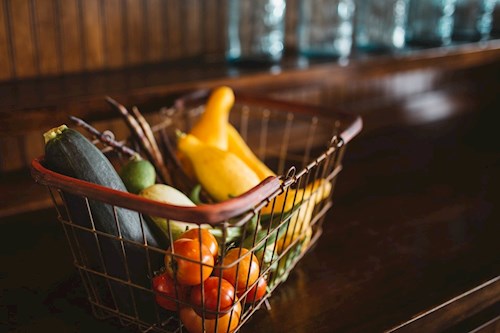

Allison Madison
Climate change can often feel overwhelming. In the face of a global crisis, our individual actions may seem inconsequential. Maybe rinsing out a can of refried beans before placing it in the recycling isn’t going to “Save the World,” but our consumer choices are significant. The impact of any given action is additive when it becomes a habit, and multiplies when we share our climate hacks with friends and family. To that end, I hope that this blog will provide actionable steps that support your journey toward living more lightly on our planet and that you, in turn, will share them with others.
Let’s start in the kitchen. When I was growing up, my dad did the bulk of the family’s cooking. Mom’s explanation for this atypical arrangement was that early on in their marriage my dad made frequent grocery store runs. He’d mess up her organized fridge, filling it with food that she couldn’t use before it went bad. By the time two kids came along, she threw up her hands and said, “If you are going to buy all this food, then you can cook it.” My dad did a pretty good job but there were definitely times that leftovers went down the toilet - we did not have a garbage disposal. Or one of the four cheeses in the fridge - yes, I grew up in Wisconsin - was so moldy that you couldn’t cut the spores off.
Why talk about food waste? Well, globally, food waste reduction is the 3rd most powerful climate solution. In the US, roughly one-third of the food we produce (160 billion tons!) is thrown “away” each year. Nutrient-rich food is trashed because it isn’t picture perfect, appetites were misjudged, etc. We have the power to change that! Here are some tips to minimize food waste in your own kitchen:
My mom is not much of a cook. She is, however, a prodigious clean-freak. For years, “shop at home first” has been her mantra for managing an organized, waste-free kitchen. Before heading to the grocery store, inventory your fridge, cupboard, and pantry. Plan meals for the week that use already-purchased and perishable items. This strategy prevents food waste before it starts.
Get the most bang from your home-cooked meal buck and be proud of it. Rather than referring to extra portions as left-overs, celebrate your forethought in generating “planned-overs” for an upcoming lunch or dinner when you won’t have time to prepare a meal. Tip: As soon as the meal is over, dish up serving-size containers of food in ready-to-go containers.
Overestimate your planned-overs? Freeze extra servings of your giant lasagna, stockpot of soup, etc. before you get sick of it and it grows white fuzz in the back of the fridge. Does your bread often go moldy before you finish the loaf? Get in the habit of freezing several slices, or more, when you bring it home. Over-ripe bananas on the counter? Peel them and stick them in the freezer for smoothies or banana bread. As you get in the habit of freezing, it’s always a great plan to label and date containers; dates will help you prioritize when you peer in the freezer, preparing to shop at home first : )
Turn vegetable peels, onion skins, and dried up garlic cloves into vegetable stock. As you generate this material, freeze it in glass jars or a large Ziploc bag until full. Dump the contents into a crockpot, cover with water, and cook for an afternoon or overnight. Strain out the material and use immediately, or freeze for later. Tip: For a detailed stock recipe and more creative ideas to reuse food scraps, check out SavetheFood.
There are lots of resources available for starting and maintaining a backyard compost pile. If you don’t have a yard or that’s not your jam, choose a local compost pickup service: Curbside Composter, Green Box Compost, and Earthstew (not currently accepting new customers). Additionally, consider contacting your local alder/council member and express an interest in municipal compost collection. The city of Madison ran a pilot residential organics recycling program in 2019 and plans to begin collecting food scraps at city drop-off sites in April of 2020. Constituent influence could help accelerate the adoption of municipal organics recycling in Dane County communities.
Combating climate change by preventing food waste requires a bit of planning, creativity, and a willingness to put in a little extra effort. Over 20% of the material dumped at the Dane County Landfill everyday is food. Let’s value the life-giving nutrition of food and the farmers that labored to get it to our plate. Food shouldn’t be the single largest municipal waste source. We can do better. You can help!

Allison has studied and taught sustainability for many years. From her native Wisconsin, she has ventured out to mountain ranges and lakeshores across the country and back again. She writes for the Dane County Office of Energy & Climate Change to give readers food for thought and actionable suggestions to be a part of the county’s work to address climate change. Together we can forge a better future. Together. Dane County.
The Dane County Office of Energy & Climate Change maintains this blog as a way to offer:
To be sure that you don't miss new blog entries, subscribe to our email updates.